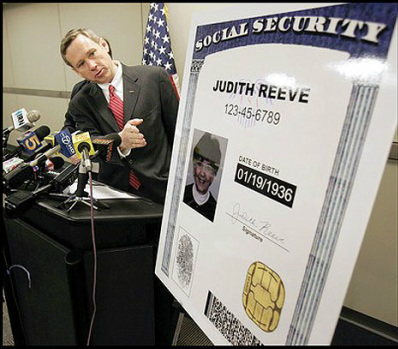When you apply for Social Security Disability Insurance (SSDI) benefits, it is important that you submit all the needed information for the Social Security Administration (SSA) to review your claim. Filling-up paperwork and gathering documents can be a daunting task, but doing so will greatly affect your chances of getting approved and having your claim reviewed faster. The SSA lists information regarding on how to apply and what documents you need to file on their Adult Disability Checklist. Before you start the disability process, it is important that you review the checklist to ensure that the information you will be gathering are complete. In order for the SSA to expedite the review of your claim and to receive benefits faster, here are the complete documents you need to include in your claim for Social Security benefits: - Birth certificate and/or proof of US citizenship or legal residency if born from foreign a country.
- Form DD 214 (military discharge information) and proof of military pay
- Last year’s income tax return (W-2 form)
- Medical records – The SSA can gather all of the necessary records, but if you already secured them, copies should be included when you submit the claim
- Employment information that includes your years of work, current and past working experiences
- Workers’ Compensation documentation – This can greatly affect you benefits once you receive the SSA’s approval. Information needed include your injury date, claim number, agreement, and proof of other disability awarded payments
- Names, birthdates and Social Security numbers of your spouse and your children
- Names and contact numbers of friends or family members in case you cannot be reached
- Names and contact numbers of all the doctors, nurses and medical professionals, as well as all of the medical establishments who has treated you for your medical condition.
- Dates in which you received treatment
- Prescribed medications that you are currently taking
- Checking and savings account numbers in which your benefits will be directly deposited
- Information about all your marriages and divorces
You should be aware that the Social Security Administration (SSA) gives you the right to undergo the appeals process. If you believe that you are not satisfied with the initial determination of the SSA regarding your claim, you must immediately pursue filing an appeal. The appeals process has four stages. Unless you are satisfied with the decision on one level, you will be proceeding to the next one. The reconsideration stage is the first stage of the appeals process. An SSA representative who did not take any part on the initial determination will review your case. If you are not satisfied with the letter containing their decision, you have to proceed with the disability hearing before an administrative law judge (ALJ). At this point, you have to secure any one of the reputable Social Security disability lawyers in your area. If you are dissatisfied with the decision of the ALJ despite providing sufficient evidences and testimonies from witnesses, you and your disability attorney should proceed to the third, which is the Social Security Appeals Council. The main office of the Appeals Council is located in Falls Church, VA, with office extensions located in Baltimore, MD and Crystal City, VA. If you wish to file a request for an appeal with the Appeals Council, you must do so in writing within 60 days from the day you received the letter containing the decision of the ALJ regarding your claim. You can send it directly to the main office in Virginia, or you can call your local SSA office. You must act quickly with your legal representative to prevent delays. If you did not make any moves within the 60-day period, the Appeals Council may dismiss your petition. The main role of the Appeals Council is to look at the ALJ’s determination regarding your claim. If they believe that the ALJ’s decision is correct, the Council will most likely reject your request for review. If they think otherwise, they may either decide on your case or return the decision to the ALJ for another review.
 Supplemental Security Income Benefits The Supplemental Security Income(SSI) is a Federal assistance program operated by the Social Security Administration (SSA). It is one of the two programs handled by the SSA, the other being the Social Security Disability Insurance(SSDI) program. The SSI is for the blind, aged, and disabled people who have limited resources and have little earnings to sustain themselves. Unlike the SSDI, that uses funds from FICA tax contributions of regular employees and self-employed individuals, the SSI program is financed by the taxes coming from the U.S. Treasury. This means that there are no work requirements, which an applicant must follow whenever they want to apply for SSI benefits. In order to qualify for SSI benefits, here are some of the criteria needed to be followed: - An individual must be aged 65 years or older, legally blind, or must have met the SSA’s definition of disability.
- The applicant is evaluated based on his or her assets. These assets are divided into two categories – income and resources.
- Income must be coming from wages, benefit programs, food assistance, pensions, and the like.
- Resources are those owned by the individual, such as savings or real estate.
The applicant can qualify for SSI benefits if he or she has a family or is unmarried. If the applicanthas a family, the combined income and resources must be less than the standard SSA level of $3,000. If thatg person is single, it must be less than $2,000. An individual who wishes to apply for SSI benefits may be taken by surprise if the claim goes the same as the70 percent of initial applicants who can get denied by the Social Security Amdinistration. To increase the individual’s chances of winning SSI benefits, he or she might seek legal representation from a California disability attorney.
 Disability Hearing with A California Disability Attorney About 70 percent of initial disability claims are denied by the Social Security Administration (SSA), which means that you have a high chance of receiving a letter from the federal agency telling you that you are not eligible to receive disability benefits. It can be frustrating to your part, especially if you’ve waited for a long time. However, this does not mean that you’ll give up on your chance to receive your much-needed benefits. Thankfully, there is the appeals process. It may be sensible for you to appeal your denied Social Security Disability Insurance(SSDI) or Supplemental Security Income(SSI) claim rather than make a new one or just give up on it. Undergoing the appeals process takes you to four levels. You may be satisfied that at the very first level ( reconsideration stage), you agree with their decision. But if not, you still have to go through the second, third, and possibly fourth stage of the appeal. The second level of the appeals process is the disability hearing with an administrative law judge (ALJ). The judge had nothing to do with the original decision, which is why it is relevant to know that the one who’ll be handling your denied claim is fair. The typical schedule of the hearing is sent to you 20 to 30 days before the date of hearing. It is usually held within 75 miles of your home. Since this is a disability hearing, you need to prepare for it. Here’s how: - You must gather complete and updated information regarding your claim. This includes additional medical records, statements from your treating physician that will support your medical condition as the reason for your inability to work, and other evidences.
- You must hire a California disability attorney who can represent you on the day of your disability hearing. He can study your claim and eloquently discuss before the judge reasons why you are entitled to receive disability benefits.

apply for Social Security Disability
One of the main requirements that you must diligently follow in order for you to qualify for disability benefits is that you must have worked long enough. Since you’ve worked long enough, it is obvious that you’ve also made tax contributions to the Social Security system, which is through FICA taxes that have been deducted from your monthly paychecks.
If you wish to apply for Social Security Disability Insurance (SSDI), it is worth noting that the Social Security Administration, upon their review of your claim, will take a look at your employment history. What they will do is they will convert your earnings into work credits. The calculation of the dollar amount equals one work credit is done per annum. In 2011, one credit is equal to a total earning of $1,120.
If you are older and have worked long enough, you will most likely have more work credits. In order for you to receive benefits, two tests involving work credits must be passed. The first one is the “recent work test”. For example, if you are 31 or older, you must have worked at least five of the last 10 years in order to pass the test.
The second is the “duration of work test”. For example, if you are aged 21 to 24, you need six work credits, or equivalent of 1.5 years of work to qualify for SSDI benefits. If you are aged 31 to 42, you need six to 18 work credits or 1.5 to 4.5 years of work in order to be eligible.
If you failed any of the two tests, you’re not anymore qualified for SSDI benefits. However, this does not mean you are not entitled to receive disability benefits. You can receive them by applying under the Supplemental Security Income (SSI) program. It is a different disability program, and unlike the SSDI, there is no requirement in terms of work credits. You just have to prove that you have limited income and resources to be eligible for SSI benefits.
|





 RSS Feed
RSS Feed